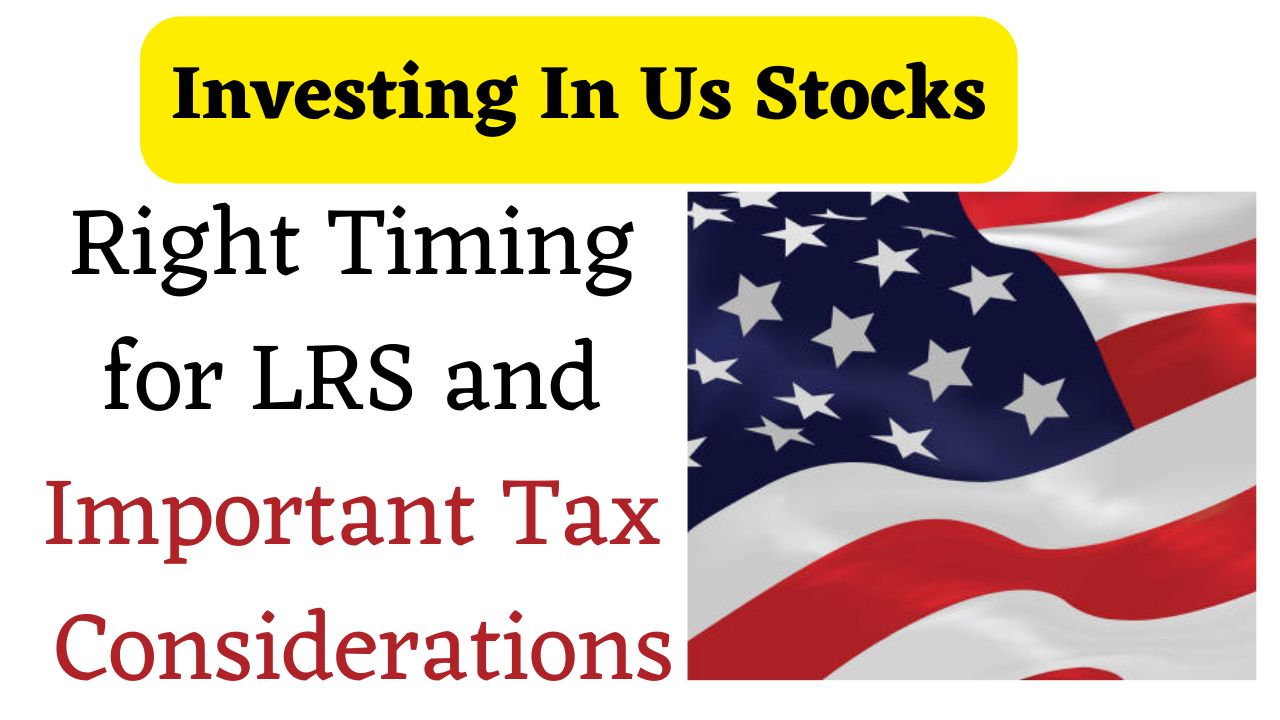How To use the Liberalised Remittance Scheme: If you want to invest in US companies, it has now become very easy. Indian investors can easily invest in Nvidia, Tesla and other US stocks. For this, you can use the Liberalized Remittance Scheme (LRS). In this article, we will know what this scheme is and how you can take advantage of it.
Right Time to Invest in Us Stocks: Possibility of Profit in Long Term Despite the Fall
With the S&P 500 index down 2.14 percent and the Nasdaq down 3.42 per cent in the past week, this does not seem like a good time to invest in US stocks. But just think: if you had invested Rs 1 lakh in Nvidia shares five years ago, it would have become over Rs 40 lakh today. Yes, Nvidia’s stock price has risen more than 3,000 per cent in the last five years. Similarly, the Nasdaq has registered a gain of 100 per cent in the last five years and the Dow Jones has also shown a gain of 50 per cent.

Looking at these figures, it is clear that the US stock market has performed brilliantly in the long run. Stock market fluctuations are common, but if you are a long-term investor and have patience, you can take advantage of these fluctuations. Under this investment strategy, instead of getting scared of the current market fluctuations, you should look at the potential gains in the long term.
So, if you are thinking of investing in US stocks, this may be the right time for you. With the right investment strategy and long-term approach, you can make good profits in the future.
What is LRS?
To invest in the US stock market, you first need to transfer that amount to the US, and for this you can use LRS. Before 2004, foreign exchange transfers were governed by the Foreign Exchange Management Act (FEMA) 1999, which had quite stringent rules.
In 2004, the Reserve Bank of India introduced LRS, which eased these restrictions. Earlier, under LRS, each resident was allowed to send up to $25,000 abroad annually, which could be used for various purposes such as tourism, education and investment. Currently, this limit has been increased to $250,000 per resident.
To transfer funds under LRS, the following conditions have to be fulfilled:
- Being a resident: You can only be a person residing in India. This means that you must be a permanent resident of India.
- Active Indian bank account: You must have an active Indian bank account. Through this account, you can transfer your funds abroad.
- Valid PAN card: You must have a valid Permanent Account Number (PAN) card. The PAN card is used to identify your financial activities and is an important document for transactions under LRS.
After fulfilling these conditions, you can easily send funds for investment in the US stock market through LRS. This process provides a simple and effective way for your investment.
Should You Invest in Us Stocks?
Even though the Indian market is performing well, global diversification is still a very good idea from a financial perspective. The US has some of the fastest growing and innovative companies, which can provide investors with significant gains when these companies touch new highs.
Investing in US stocks gives your portfolio the benefit of geographical diversification, and it can better withstand unexpected shocks in the Indian market. Also, you can benefit from the appreciation of the US dollar, which is usually between 3-5 per cent per annum.
let’s understand how you can invest in US stocks using LRS.
How can Indians use LRS to invest in the US stock market?
There are a few ways to leverage LRS to invest in the US market:
Opening a trading account with a foreign brokerage: You can open a trading account with a foreign brokerage firm that is present in India, or with a domestic brokerage that is affiliated with a US brokerage firm. In this case, you may usually have to pay additional fees, such as brokerage fees, currency conversion fees, and money transfer costs. In addition, there may also be additional expenses such as account opening fees or minimum investment amounts. Therefore, you should take care of these costs and check out each brokerage thoroughly.
Investing through fintech apps:
You can also invest in US stocks through new-generation fintech apps. Some apps may offer features such as low-cost investing, competitive currency exchange rates, and easy money transfers. Moreover, after completing the initial formalities, these platforms handle the complexities related to LRS with minimal intervention and effort.
Precautions:
When you invest in domestic mutual funds, such as exchange-traded funds and fund of funds, it does not fall under the LRS limit, as you are investing in Indian rupees. However, not all mutual funds are now accepting fresh investments in foreign stocks. In 2022, the Securities and Exchange Board of India (SEBI) had asked mutual funds to stop accepting fresh investments in schemes based on foreign stocks, as the industry approached the $7 billion limit available for investing in foreign securities.
Important Tax Aspect Keep in Your Mind
Tax Collected at Source (TCS): If you send more than Rs 7 lakh in a financial year under LRS, the amount over Rs 7 lakh will attract 20 per cent TCS, which can be claimed later. TCS is not applicable on amounts less than Rs 7 lakh.
Income Tax: Gains from foreign investments will be taxed only in India. Under the India-US Double Taxation Agreement, US taxes can be set off against your tax liability in India. The long-term capital gains (LTCG) tax on US stocks and ETFs is now 12.5 per cent, up from 20 per cent earlier, and is applicable if you hold US securities for more than 24 months.